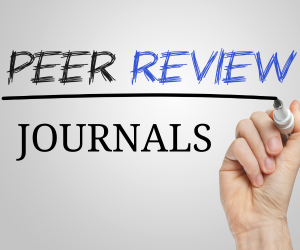ASSOCIATION OF HYPERTENSION WITH SERUM UREA AND CREATININE
DOI:
https://doi.org/10.48047/HM.V11.I1.2025.730-735Keywords:
Hypertension, Creatinine, Urea, renal dysfunction.Abstract
INTRODUCTION: Hypertension is a widespread, challenging disorder. Elevated systolic and diastolic blood pressure are hallmarks of hypertension that can also result from a sedentary lifestyle, which can lead to vascular illness, chronic kidney disease (CKD), myocardial infarction, and stroke. It can also affect biological parameters like urea and creatinine, which are elevated in the majority of hypertensive patients.
OBJECTIVE: The objective of this study is to acknowledge how the serum urea, creatinine, and impaired renal functions is interlinked with hypertensive patients.
METHODOLOGY: EPI software was used to calculated the sample size for the cross sectional study of 50 patients at central park teaching hospital(CPTH), with a age limit of 18-80 years, whose urea creatinine has been already measured and whose medical history has been thoroughly examined to determine either they are hypertensive or normotensive.
RESULTS: The results of this research indicate a positive correlation between elevated serum urea and creatinine levels and increased systolic blood pressure. This shows a relation between hypertension and kidney function biomarkers, i.e, urea and creatinine.
CONCLUSION: Urea and creatinine are highly interlinked with hypertensive patients. High levels of urea and creatinine have been observed in hypertensive patients, and hypertension is frequently the cause of decreased renal functioning because of vascular blockage.
Downloads
References
2. elliott, w. j. (2007). systemic hypertension. current problems in cardiology, 32(4), 201–259. https://doi.org/10.1016/j.cpcardiol.2007.01.002
3. vallée, a., gabet, a., grave, c., sorbets, e., blacher, j., & olié, v. (2020). patterns of hypertension management in france in 2015: the esteban survey. journal of clinical hypertension (greenwich), 22(4), 663–672. https://doi.org/10.1111/jch.13834
4. chen, x., jin, h., wang, d., liu, j., qin, y., zhang, y., zhang, y., & xiang, q. (2023). serum creatinine levels, traditional cardiovascular risk factors, and 10 year cardiovascular risk in chinese patients with hypertension. frontiers in endocrinology, 14, 1140093. https://doi.org/10.3389/fendo.2023.1140093 (ki reports, pmc)
5. harwood nash, d. c., & lansdown, e. l. (1967). evaluation of the urea washout pyelogram and urography in the assessment of renovascular hypertension. canadian medical association journal, 96(5), 245–256.
6. zulkarnain, m., wan zain, w. m. s., najib, m. y., & aniza, m. j. (2024). association between serum uric acid levels with essential hypertension and its metabolic variables in hospital universiti sains malaysia. the medical journal of malaysia, 79(4), 457–463.
7. de la espriella, r., ortiz, a., & núñez, j. (2024). the blood urea nitrogen to creatinine ratio in chronic heart failure: “when the past is prologue”. european journal of heart failure, 26(2), 257–259. https://doi.org/10.1002/ejhf.3146
8. shin, s. h., wendland, m. f., zhang, b., tran, a., tang, a., & vandsburger, m. h. (2020). noninvasive imaging of renal urea handling by cest mri. magnetic resonance in medicine, 83(3), 1034–1044. https://doi.org/10.1002/mrm.27968
9. wang, r., wu, s., wang, j., li, w., cui, j., & yao, z. (2024). a nonlinear correlation between the serum uric acid to creatinine ratio and the prevalence of hypertension: a large cross sectional population based study. renal failure, 46(1). https://doi.org/10.1080/0886022x.2023.2296002
10. el shalakany, a. h., mashal, b. s. a. a. b., kora, m. a. a., & bader, r. s. (2014). clinical significance of saliva urea and creatinine levels in patients with chronic kidney disease. menoufia medical journal, 28(2), article 22. https://doi.org/10.4103/1110-2098.163893
11. joshi, b., singh, s., & pandey, s. (2016). a study of serum urea, creatinine and proteinuria in hypertensive patients. international journal of current research, 8(10), 40295–40299.
12. pandya, d., nagrajappa, a. k., & ravi, k. s. (2016). assessment and correlation of urea and creatinine levels in saliva and serum of patients with chronic kidney disease, diabetes, and hypertension – a research study. journal of clinical and diagnostic research (jcdr), 10(10), zc58–zc62. https://doi.org/10.7860/jcdr/2016/20294.8651
13. akpotaire, p. a., & seriki, s. a. (2023). assessment and correlation of serum urea and creatinine levels in normal, hypertensive, and diabetic persons in auchi, nigeria. archives of pathology & clinical research, 7, 007–016. https://doi.org/10.29328/journal.apcr.1001035
14. renda, r. (2017). can salivary creatinine and urea levels be used to diagnose chronic kidney disease in children as accurately as serum creatinine and urea levels? renal failure, 39(1), 452–457. https://doi.org/10.1080/0886022x.2017.1308256 (indonesianjournalofclinicalpathology.org, researchgate, pubmed)
15. choudhry, a. a., et al. (2024). efficacy of salivary urea and creatinine compared to serum levels in ckd. journal of clinical and diagnostic research, 18(1), bc05–bc08. (jcdr)
16. tanjung, a., hidayah, i. n., maulidayanti, s., & situmorang, i. m. b. (2024). analysis of serum creatinine levels, blood pressure and grade of hypertension of chronic disease management program participants. medical laboratory technology journal, 10(2), article 619. https://doi.org/10.31964/mltj.v10i2.619 (researchgate)
17. zeng, y., chen, y., li, j., et al. (2024). nonlinear association between the serum uric acid to creatinine ratio and all cause mortality in patients with hypertension: a ten year cohort study using the nhanes database. scientific reports, 14, 31423. https://doi.org/10.1038/s41598-024-83034-x (nature)
18. perera, a., et al. (2022). plasma creatine concentration is associated with incident hypertension. journal of hypertension, 40(2), 000–000. https://doi.org/10.1097/hjh.0000000000002955 (lippincott journals)
19. (meta-analysis) “saliva urea nitrogen for detection of kidney disease in adults”. (2023). plos one, meta-analysis. (plos)
20. brelje, t., et al. (2020). dynamics of salivary markers of kidney functions in acute and chronic kidney disease. scientific reports, 10, 12345–12356. https://doi.org/10.1038/s41598-020-78209-1 (nature)
21. assessment of measurement of salivary urea by atr ftir and its correlation with ckd severity. (2022). kidney360, 3(4), 789–797. (lippincott journals)
22. madrak, s., et al. (2022). association between chemical components of saliva and serum in esrd patients. brief reports in renal medicine, 4(5), 210–218. (brieflands.com)
Downloads
Published
Issue
Section
License
Copyright (c) 2025 Arhama Muzamil, Hareem Fatima, Rizwan Khalid, Dr. Farah Naz Tahir (Author)

This work is licensed under a Creative Commons Attribution 4.0 International License.
You are free to:
- Share — copy and redistribute the material in any medium or format for any purpose, even commercially.
- Adapt — remix, transform, and build upon the material for any purpose, even commercially.
- The licensor cannot revoke these freedoms as long as you follow the license terms.
Under the following terms:
- Attribution — You must give appropriate credit , provide a link to the license, and indicate if changes were made . You may do so in any reasonable manner, but not in any way that suggests the licensor endorses you or your use.
- No additional restrictions — You may not apply legal terms or technological measures that legally restrict others from doing anything the license permits.
Notices:
You do not have to comply with the license for elements of the material in the public domain or where your use is permitted by an applicable exception or limitation .
No warranties are given. The license may not give you all of the permissions necessary for your intended use. For example, other rights such as publicity, privacy, or moral rights may limit how you use the material.







